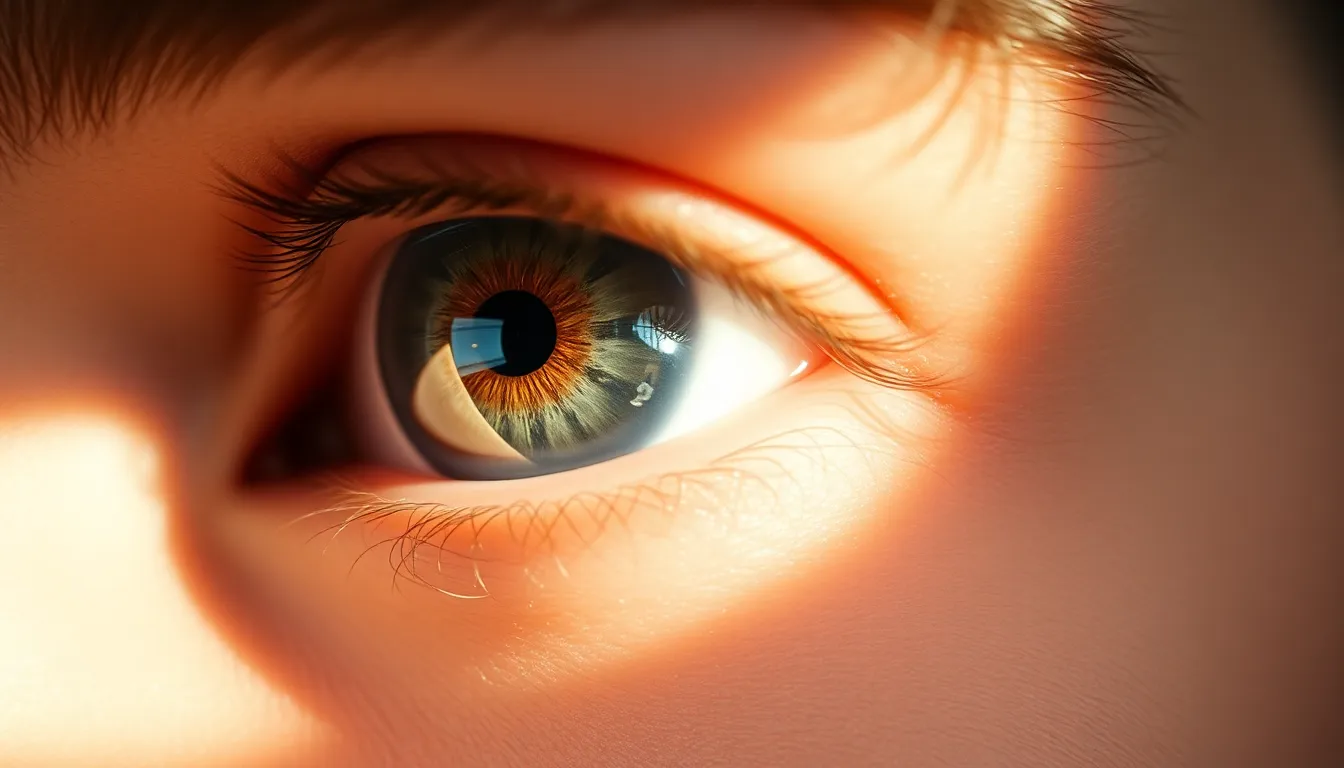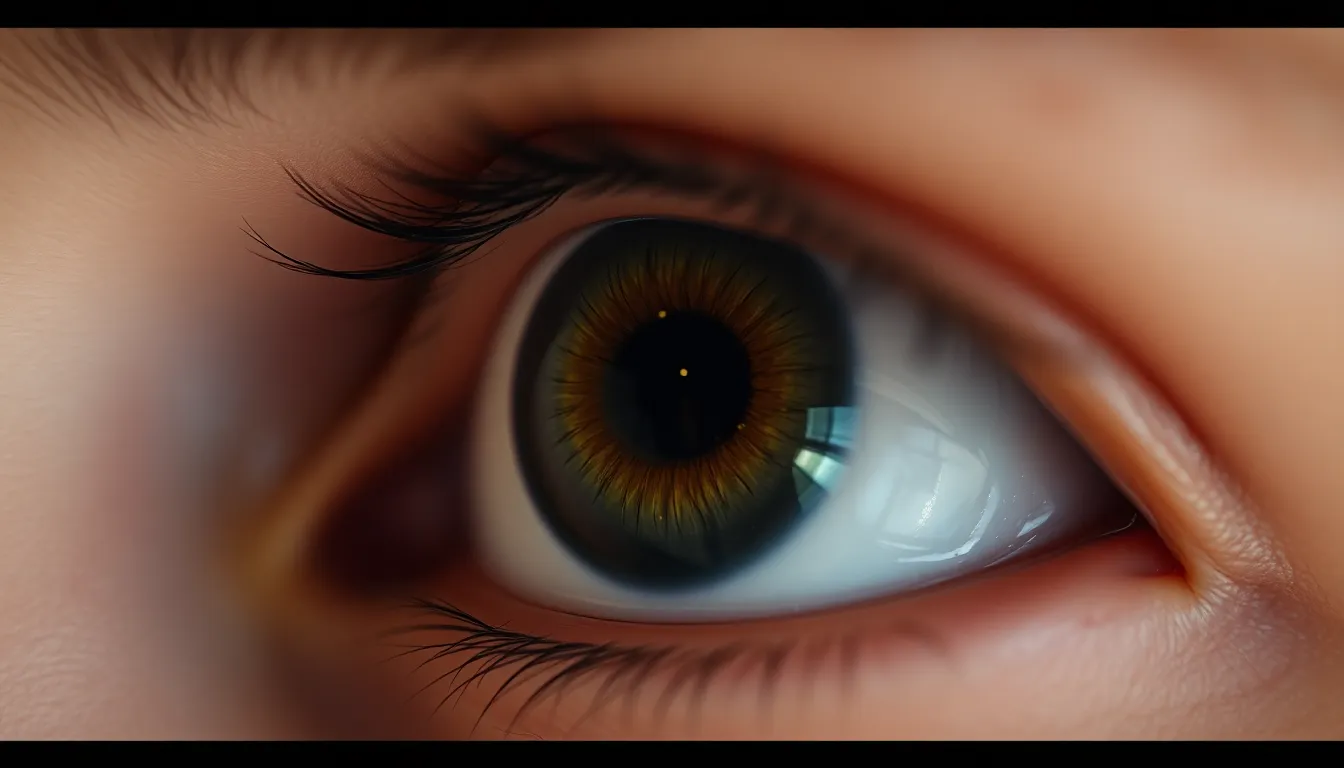Ever caught yourself staring at the wall, only to notice tiny moving spots of light dancing around like they’re auditioning for a talent show? You’re not alone. These whimsical specks can pop up in your vision, leaving you wondering if you’ve suddenly entered a sci-fi movie or if your eyes are just playing tricks.
While it might seem like your retinas are throwing a party, these spots—known as floaters—are actually quite common. They can be harmless, but sometimes they signal that it’s time to pay a visit to the eye doctor. So before you start thinking you’re channeling your inner disco ball, let’s explore what these tiny light shows really mean and when it’s a good idea to seek help.
Table of Contents
ToggleUnderstanding Tiny Moving Spots Of Light
Tiny moving spots of light, commonly referred to as floaters, appear within an individual’s field of vision. They can manifest as small dots, specks, or cobweb-like shapes drifting in the eye.
Definition and Explanation
Floaters consist of tiny clumps of gel or cells within the vitreous, the clear gel that fills the eye. As light enters the eye, these clumps cast shadows on the retina, creating the perception of moving spots. Floaters may become more noticeable with age as the vitreous shrinks and becomes more liquid. While they are often harmless, sudden increases in floaters or flashes of light could signal a more severe condition, such as retinal detachment, necessitating prompt medical evaluation.
Common Terminology
Individuals often encounter specific terms related to floaters. “Vitreous humor” describes the gel-like substance filling the eye. “Retina” refers to the light-sensitive layer of tissue at the back of the eye. Terms like “photopsia” might denote the perception of flashes of light. Describing floaters involves language like “shape,” “size,” and “motion.” Recognizing these terms helps facilitate clear communication with eye care professionals regarding any concerns related to visual disturbances.
Causes Of Seeing Tiny Moving Spots Of Light

Seeing tiny moving spots of light can arise from various factors, ranging from benign visual phenomena to underlying medical conditions.
Visual Phenomena
Visual phenomena encompass experiences like floaters and flashes that result from normal eye function. Floaters consist of tiny clumps of gel or cells in the vitreous gel. As these floaters drift within the eye, they cast shadows on the retina, leading to the perception of moving spots. Additionally, light entering the eye can create flashes when the retina experiences sudden movement or pressure. Flashes of light may sometimes occur during activities like rapid eye movement or exertion, contributing to the overall visual experience.
Medical Conditions
Medical conditions can also cause the appearance of tiny moving spots of light. Retinal detachment represents a serious concern where the retina separates from its underlying supportive tissue. Symptoms might include a sudden increase in floaters or flashes of light. Vitreous hemorrhage occurs when blood leaks into the vitreous gel, resulting in floaters and changes in vision. Other conditions, like migraines with aura, can present as transient visual disturbances, including flickering spots or zigzag patterns. Both situations warrant caution, making it essential to consult an eye care professional for a thorough assessment.
Symptoms Associated With Tiny Moving Spots Of Light
Tiny moving spots of light often accompany other visual disturbances. Understanding these associated symptoms provides a clearer picture of one’s eye health.
Other Visual Disturbances
Individuals may experience more than just tiny moving spots of light. Flashes of light, often described as brief bursts or streaks, can occur during sudden movements or pressure in the eye. Some may notice blurred vision, which affects clarity and focus. A wavy or distorted appearance in straight lines, known as metamorphopsia, could also be present, indicating potential retinal issues. Sensitivity to light might emerge as well, with bright environments seeming overwhelmingly intense. Recognizing these symptoms aids in assessing the urgency of one’s condition.
When To Seek Medical Attention
Timely medical attention remains crucial for certain symptoms related to tiny moving spots of light. Sudden increases in floaters or the appearance of new flashes warrants immediate evaluation. Individuals experiencing a shadow or curtain-like effect across their vision face a potential retinal detachment, a serious condition that requires urgent care. Any sudden change in vision, such as rapid blurriness or loss, also indicates the need for a comprehensive eye exam. Seeking professional evaluation ensures appropriate diagnostic tests and treatments, safeguarding overall vision health.
Diagnosis And Treatment Options
Identifying the cause of tiny moving spots of light requires a thorough examination by an eye care professional. Comprehensive eye examinations include various tests aimed at assessing overall eye health and determining potential issues.
Eye Examinations
During an eye examination, the doctor evaluates the retina and vitreous humor using specialized equipment. They typically use a slit lamp to gain a detailed view of the eye’s structures, which helps in detecting any abnormalities. Moreover, dilating the pupils allows for a more comprehensive assessment of the retina and peripheral areas. Patients may also undergo visual field tests to measure their peripheral vision. Regular eye exams play a key role in early detection of potential complications related to floaters.
Potential Treatments
Treatment options for floaters vary depending on their cause and severity. In many cases, no treatment is necessary as floaters often become less noticeable over time. However, if floaters significantly impair vision or indicate a serious condition, specific interventions may be needed. Laser therapy can be used to break up floaters, making them less visible. In more severe cases, a vitrectomy – a surgical procedure to remove vitreous gel – may be considered. This option, however, is typically reserved for cases where floaters interfere with quality of life.
Preventive Measures
Maintaining good eye health can reduce the risk of experiencing tiny moving spots of light. Practicing regular eye care promotes overall vision wellness.
Eye Health Tips
Regular eye exams represent a primary strategy for maintaining eye health. Eye care professionals can detect potential issues early during these evaluations. Staying hydrated influences the eyes’ moisture levels, potentially reducing the perception of floaters. Wearing sunglasses protects the eyes from harmful UV rays, which can contribute to eye damage over time. Incorporating a balanced diet rich in vitamins A, C, and E supports eye function and may help prevent visual disturbances. These nutrients assist in maintaining good retinal health.
Lifestyle Changes
Incorporating consistent exercise promotes circulation, which plays a vital role in overall eye health. Managing chronic conditions, such as diabetes or hypertension, significantly reduces the risk of developing visual disturbances. Prioritizing screen time management prevents eye strain and fatigue, which may contribute to the perception of floaters. Implementing the 20-20-20 rule provides a practical way to combat digital eye strain. Every 20 minutes, looking at something 20 feet away for 20 seconds refreshes the eyes. Lastly, reducing alcohol and tobacco use can yield considerable benefits for eye health.
Seeing tiny moving spots of light can be a common experience for many individuals. While often harmless, awareness of one’s symptoms is essential for maintaining eye health. Recognizing when to seek professional help can make a significant difference in addressing potential issues.
Regular eye exams not only support early detection but also provide valuable insights into overall eye health. By adopting preventive measures and staying informed about visual disturbances, individuals can safeguard their vision and ensure a better quality of life. Prioritizing eye care is a proactive step toward long-term visual wellness.





